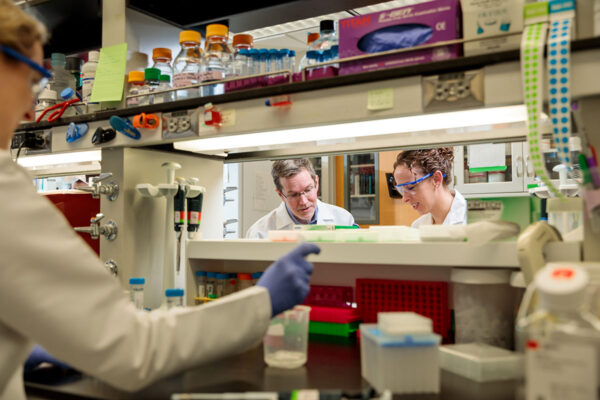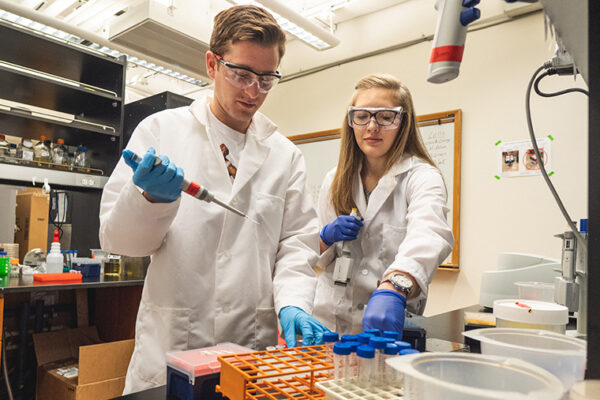Phase separation is a process cells use to sort and separate distinct protein and nucleic acid components. As a process, phase separation helps ensure regulation of cellular matter in space and time. Aberrant phase transitions lead to clumps of proteins inside cells, a hallmark of neurodegenerative diseases, including amyotrophic lateral sclerosis (ALS), or Lou Gehrig’s disease.
Scientists at St. Jude Children’s Research Hospital in Memphis, Tenn., and Washington University in St. Louis are working together to study the rules underlying phase separation.

The labs of Tanja Mittag at St. Jude and Rohit Pappu, the Gene K. Beare Distinguished Professor of biomedical engineering at the McKelvey School of Engineering, created a stickers-and-spacers model to discern the rules underlying the driving forces for phase separation. The “stickers” and “spacers” are different types of amino acids along the protein chain.
The valence, or number, of stickers and the linear arrangement of stickers versus spacers has been shown by the Mittag and Pappu labs to have an impact on phase separation.
Building on that work, the Mittag and Pappu labs have uncovered a hierarchy of sticker and spacer interactions, gleaned using evolutionary analysis, and affirmed using biophysical measurements and physical theories. A new result to emerge is the role of net charge and the imbalance of charged amino acids on the driving forces for phase separation.
A paper on the work was published Dec. 20 in the journal Nature Chemistry.
“Our work showcases the hidden complexities inherent to low-complexity domains,” said co-corresponding author Pappu. “Hierarchies of interaction strengths are encoded at the sequence level and utilized to generate emergent behaviors such as phase separation.”
Read the full article on the St. Jude website.
The study was funded by the National Institutes of Health (5R01NS056114, R01NS121114, P30GM138395); the Air Force Office of Scientific Research (FA9550-20-1-0241); the St. Jude Collaborative Research Consortium on Membranelles Organelles and Foundation; and ALSAC, the fundraising and awareness organization of St. Jude.
The McKelvey School of Engineering at Washington University in St. Louis promotes independent inquiry and education with an emphasis on scientific excellence, innovation and collaboration without boundaries. McKelvey Engineering has top-ranked research and graduate programs across departments, particularly in biomedical engineering, environmental engineering and computing, and has one of the most selective undergraduate programs in the country. With 140 full-time faculty, 1,387 undergraduate students, 1,448 graduate students and 21,000 living alumni, we are working to solve some of society’s greatest challenges; to prepare students to become leaders and innovate throughout their careers; and to be a catalyst of economic development for the St. Louis region and beyond.


